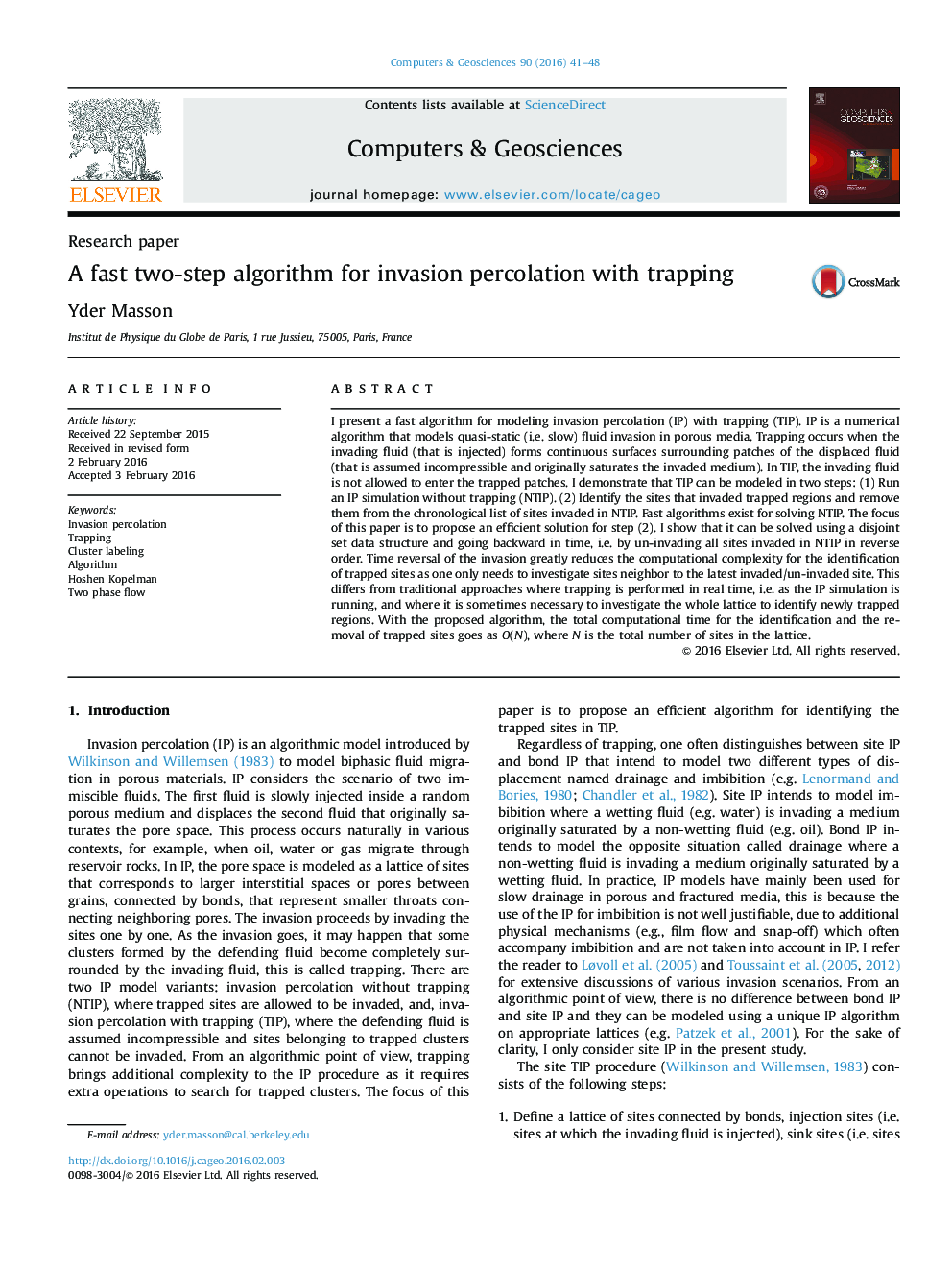| کد مقاله | کد نشریه | سال انتشار | مقاله انگلیسی | نسخه تمام متن |
|---|---|---|---|---|
| 10352385 | 865090 | 2016 | 8 صفحه PDF | دانلود رایگان |
عنوان انگلیسی مقاله ISI
A fast two-step algorithm for invasion percolation with trapping
ترجمه فارسی عنوان
یک الگوریتم سریع دو مرحله ای برای نفوذ با تله
دانلود مقاله + سفارش ترجمه
دانلود مقاله ISI انگلیسی
رایگان برای ایرانیان
کلمات کلیدی
نفوذ نفوذ، به دام انداختن، برچسب زدن خوشه، الگوریتم، حسین کپلمن، دو فاز جریان،
موضوعات مرتبط
مهندسی و علوم پایه
مهندسی کامپیوتر
نرم افزارهای علوم کامپیوتر
چکیده انگلیسی
I present a fast algorithm for modeling invasion percolation (IP) with trapping (TIP). IP is a numerical algorithm that models quasi-static (i.e. slow) fluid invasion in porous media. Trapping occurs when the invading fluid (that is injected) forms continuous surfaces surrounding patches of the displaced fluid (that is assumed incompressible and originally saturates the invaded medium). In TIP, the invading fluid is not allowed to enter the trapped patches. I demonstrate that TIP can be modeled in two steps: (1) Run an IP simulation without trapping (NTIP). (2) Identify the sites that invaded trapped regions and remove them from the chronological list of sites invaded in NTIP. Fast algorithms exist for solving NTIP. The focus of this paper is to propose an efficient solution for step (2). I show that it can be solved using a disjoint set data structure and going backward in time, i.e. by un-invading all sites invaded in NTIP in reverse order. Time reversal of the invasion greatly reduces the computational complexity for the identification of trapped sites as one only needs to investigate sites neighbor to the latest invaded/un-invaded site. This differs from traditional approaches where trapping is performed in real time, i.e. as the IP simulation is running, and where it is sometimes necessary to investigate the whole lattice to identify newly trapped regions. With the proposed algorithm, the total computational time for the identification and the removal of trapped sites goes as O(N), where N is the total number of sites in the lattice.
ناشر
Database: Elsevier - ScienceDirect (ساینس دایرکت)
Journal: Computers & Geosciences - Volume 90, Part A, May 2016, Pages 41-48
Journal: Computers & Geosciences - Volume 90, Part A, May 2016, Pages 41-48
نویسندگان
Yder Masson,
